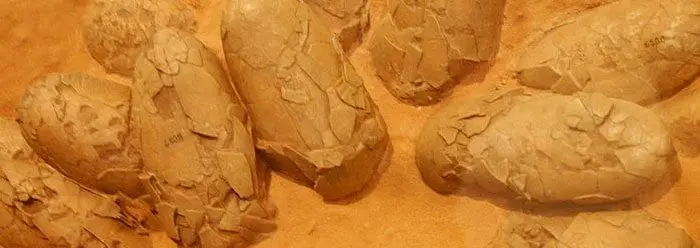by Brian Thomas, M.S.
German scientists revealed that some Chinese dinosaur eggs probably looked similar to the dark blue-green hue of modern emu eggs. If the dinosaur’s original pigment molecules revealed the egg’s color, then a significant question emerges. Can pigments really stay colorful for 66 million years?
The eggs came from three different upper Cretaceous sites, and their dark color contrasted with the sediment that encased them. Curious about the color, the German team from the University of Bonn conducted chemical separation techniques to isolate original dinosaur egg pigments—the first discovery of its kind.1 Though the eggs have likely lost some of their pattern detail, the presence of specific pigments named protoporphyrin and biliverdin within the ancient shells confirmed they were probably a dark blue-green color.
These pigment molecules are somewhat complicated, though not as intricately organized as proteins or DNA. The dinosaur eggshell pigments contain five-sided chemical ring structures all bonded together. The pigments do not easily dissolve in water, which certainly helps account for them persisting for at least thousands of years, but their carbon and nitrogen-containing chemical rings include plenty of double-bonds. These bonds certainly can’t last forever. They hold stored chemical energy, fertile ground for the relentless chemical reactions that always break down these kinds of molecules. …Continue reading.






